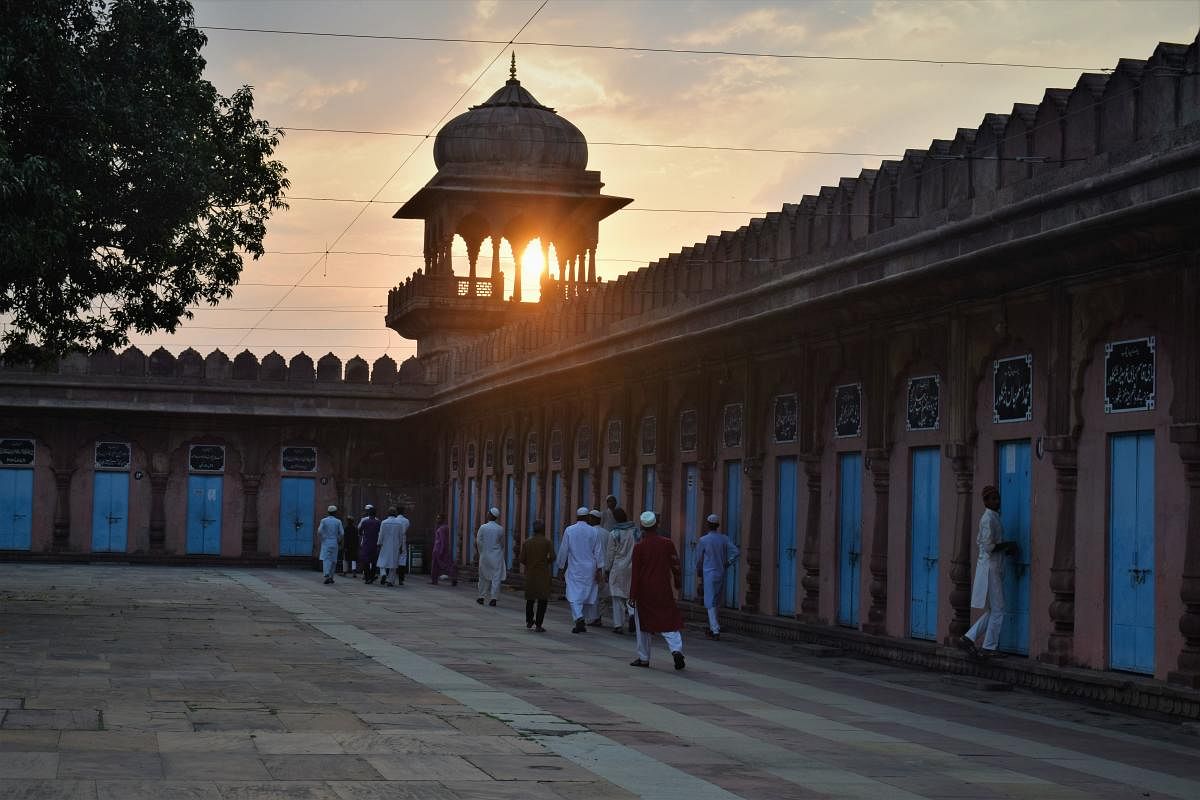
The golden rays of the early morning sun bathed the minaret in kaleidoscopic colours. The massive courtyard was empty, barring the disciplined line of young students making their way to an early morning class. Our presence, in a way, seemed to spoil the pristine and picture-perfect setting of the place.
“Whatever you see in Bhopal is all done by women, so it is a women’s dominion, Men have nothing to do with it,” drawled the voice of Sikandar Malik who was narrating the fascinating history of Bhopal. A series of four powerful women rulers, known as the ‘Begums of Bhopal’, ruled their erstwhile kingdom of Bhopal that stretched over an approximate area of 8,627 sq km. The area they ruled over constitutes three districts of Madhya Pradesh today.
Women power
The Begums of Bhopal were remarkable trailblazers of women empowerment way back in the 18th and early 19th centuries. Their strong and just rule combined with able administration ensured a golden and glorious chapter in the history of the region. They are inspirations even today for their powerful impact on history at a time when most of the world was still in the dark shadows of male domination and chauvinism.
Taj-ul-Masajid, which literally means ‘the crown of mosques’, located in the heart of Bhopal, is in many ways a monument and symbol of the rule of the Begums of Bhopal who blazed their way into history in the patriarchal society of the times.
Taj-ul-Masajid is a labour of love of the most famous of the Begums of Bhopal, Begum Shahjahan, who ruled Bhopal in the 19th century. Begum Shahjahan, in sharp contrast to her mother Sikandar Begum, was not trained in the supposedly masculine disciplines of fighting and hunting. On the contrary, she was drawn to the fine arts and wanted to be a poetess. The arts and architecture of the region flourished under her able administration. She also wrote a path-breaking manual for women which is considered to be the first encyclopaedia with information about the status of women in Islam.
Begum Shahjahan, during her tenure, built many mosques, temples, palaces, apart from contributing to the development of women’s upliftment, education and health. But the most notable of her contributions is the commissioning of the construction of Taj-ul-Masajid in Bhopal.
Secular living
Legend has it that Begum Shahjahan was in the process of constructing a palace when a beggar stopped her and asked her to construct God’s house, meaning a mosque, first. Thus began the construction of what would come to be known as Taj-ul-Masajid. When the ground for the mosque was being cleared, some temples were discovered. Begum Shahjahan had these temples restored and had the site of the mosque shifted to another elevated site nearby where it finally took shape. This, of course, speaks volumes of the secular mindset of the Begum who used to dress up as Radha and participate in the Janmashtami festivities of the temples in the vicinity.
Begun Shahjahan wanted the mosque to be in a class of its own and be renowned as the best amongst all. So, she invited an architect named Allah Rakha Khan and asked him if he had seen the famous Jama Masjid in Delhi to which the architect replied that he actually prayed regularly in that mosque. Her next question to the architect was if he had seen the famous Badshahi Mosque in Lahore. On again receiving an answer in the affirmative, she asked him to blend the best of both the mosques while designing Taj-ul-Masajid. However, the queen died of cancer in 1901 with the incomplete Taj-ul-Masajid standing as a forlorn testimony to her dream.
The construction of Taj-ul-Masajid, which began in the late 19th century, was completed only during the later half of the 20th century because of the intervening world wars. But whatever the Begum achieved during her lifetime with the design of the Taj-ul-Masajid was in itself epic.
The upper portion of Taj-ul-Masajid has exquisite balconies which are reminiscent of the architectural design of Badshahi Mosque in Lahore. On the other hand, the basic design is more akin to that of Jama Masjid in Delhi.
Treat for the eyes
The main structure of Taj-ul-Masajid consists of three divisions which have nine hollow domes, each of which have been strategically built at nodal points for the intersection of sound. The hollow domes help in the acoustics of the building. Two white domes rise from the building ornamented by crystal spires specially procured by the Begum from Belgium. Another remarkable feature of Taj-ul-Masajid is the ladies section where women are allowed to do namaz.
There is a huge courtyard with a pond in the centre which reflects the beautiful architecture of the mosque, the entire courtyard is skirted by arched rooms with black boards on top which have the names of donors engraved in Urdu. The mosque was completed through funds gathered from donations.
Taj-ul-Masajid is home to a modern madrasa where students study not only the Koran but also English, Social Sciences and Mathematics. We walk through the main hall of Taj-ul-Masajid and see young students reciting from the Koran, their voices amplified by the acoustics of the place. Each stone and pillar in the mosque seem to shout aloud the glorious history of the reign of the Begums of Bhopal.